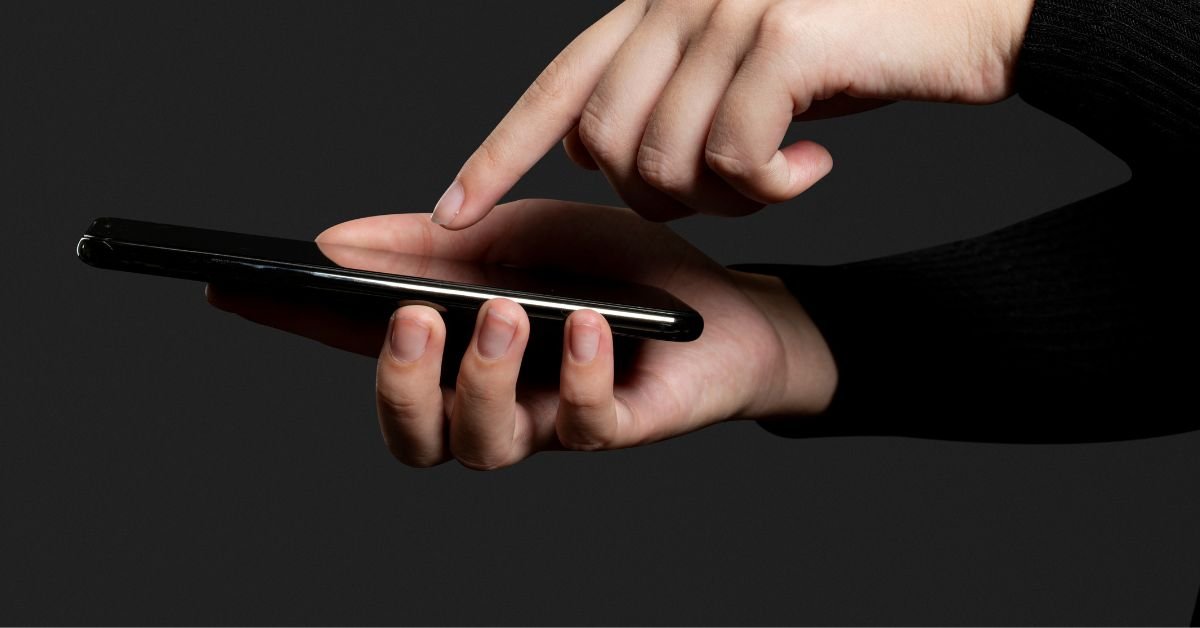BLOG
Quick Guide: How to Turn Off iPhone 16

Quick Guide: How to Turn Off iPhone 16
The iPhone 16 offers a sleek design and powerful features, but many users wonder how to turn off this latest model efficiently. Whether you need to power down for troubleshooting, conserve battery, or simply restart the device, understanding the shutdown process is essential. The methods to turn off the iPhone 16 have evolved with Apple’s software updates, including the latest iOS interface, making it crucial to know the right steps for this specific model.

Understanding the iPhone 16 Shutdown Process
Unlike earlier iPhone versions with a simple physical button to power off, the iPhone 16 incorporates a combination of buttons and touchscreen controls to initiate a shutdown. This change is partly due to Apple’s shift towards a more gesture-based interface and security features like Face ID, which replaced Touch ID in recent models. The power button on the iPhone 16, officially called the Side button, plays a significant role in turning off the device but must be used in conjunction with other controls.
Furthermore, iOS 17, the operating system running on the iPhone 16, offers additional options like powering off through the Settings menu or using emergency SOS features that also involve the Side button. This guide covers all these techniques to ensure users can confidently power down their iPhones regardless of their familiarity with Apple devices.
Method 1: Using the Physical Buttons to Turn Off iPhone 16
The most straightforward way to turn off your iPhone 16 involves a combination of physical buttons:
- Press and hold the Side button and either Volume Up or Volume Down button simultaneously.
- Keep holding until the “slide to power off” slider appears on the screen.
- Drag the slider from left to right to power off your iPhone.
This method is quick and useful when your phone is responsive and the touchscreen is working properly. It’s important to note that holding these buttons too long without sliding will trigger the emergency SOS mode, so be sure to follow the instructions carefully.
Method 2: Turning Off iPhone 16 via Settings
If the physical buttons are not working or you prefer using the touchscreen, iOS 17 on the iPhone 16 allows powering off through the Settings app:
- Open the Settings app.
- Scroll down and tap on General.
- Scroll to the bottom and select Shut Down.
- The “slide to power off” option will appear—slide it to turn off your device.
This method is especially useful if your Side button is damaged or unresponsive, or if you want to avoid holding multiple buttons.

Method 3: Using AssistiveTouch to Power Off
For users with accessibility needs or those who prefer an on-screen control method, AssistiveTouch offers an easy alternative to turn off the iPhone 16:
- Enable AssistiveTouch by going to Settings > Accessibility > Touch > AssistiveTouch and toggle it on.
- A floating button will appear on your screen.
- Tap the AssistiveTouch button, then tap Device.
- Press and hold Lock Screen until the “slide to power off” appears.
- Slide to power off.
AssistiveTouch is also helpful if any physical buttons are malfunctioning or for users who prefer using touch controls over hardware buttons.
What to Do If Your iPhone 16 Won’t Turn Off
Occasionally, your iPhone 16 may become unresponsive, making the usual shutdown procedures ineffective. In such cases, you may need to force restart your device:
- Quickly press and release the Volume Up button.
- Quickly press and release the Volume Down button.
- Press and hold the Side button until the Apple logo appears.
Note that a force restart is different from powering off; it forces the device to reboot without a full shutdown. Use this method only when necessary, as it may interrupt ongoing processes or unsaved data.
Additional Tips to Manage Power on Your iPhone 16
Understanding how to turn off your iPhone 16 is just one part of managing your device’s power efficiently. You can also extend battery life by enabling Low Power Mode in the Settings, adjusting screen brightness, and closing background apps. iOS 17 also provides battery health information to monitor your device’s performance and optimize charging habits.
Moreover, the iPhone 16’s new hardware improvements include a more efficient processor and adaptive battery management, designed to prolong battery life and reduce the need for frequent shutdowns or reboots.
Frequently Asked Questions (FAQs)
Q1: Can I turn off the iPhone 16 without using the Side button?
Yes, you can use the Settings app to shut down your iPhone or enable AssistiveTouch for on-screen controls.
Q2: What happens if I hold the Side button and volume buttons too long?
Holding these buttons too long triggers the emergency SOS feature, which calls emergency services if not canceled.
Q3: How do I force restart the iPhone 16?
Quickly press and release Volume Up, then Volume Down, then press and hold the Side button until the Apple logo appears.
Q4: Does turning off my iPhone 16 save battery?
Yes, powering off the device conserves battery when not in use for extended periods.
Q5: Can I schedule my iPhone 16 to turn off automatically?
Currently, iOS does not support scheduled shutdowns, but you can set Do Not Disturb and sleep modes for managing usage times.
Conclusion
Knowing how to turn off the iPhone 16 is essential for every user, whether for troubleshooting, saving battery life, or restarting the device for better performance. The combination of physical buttons, Settings app options, and accessibility features like AssistiveTouch provides flexible ways to power down your phone. Additionally, understanding how to handle unresponsive situations with a force.
BLOG
hdtoday.cc Safe Review: Pros and Cons

Is hdtoday.cc safe? This is a common query among users. HDToday.cc does not have licensing agreements with most content producers, which means streaming copyrighted movies without permission may violate copyright laws. While many users access content for personal use, it’s critical to understand the legal risks, especially in regions with strict copyright enforcement.
HD Today Movie Download Safe Tips
When considering downloads, safety is paramount. HD Today movie download safe practices include:
- Avoid downloading unknown executables from pop-ups.
- Check for HTTPS encryption on the website.
- Use reputable antivirus software before opening files.
- Prefer streaming over downloading when security is uncertain.
Following these tips can reduce the risk of malware or corrupted files.
HD Today Review 2025: Features and Usability
HD Today review 2025 highlights its pros and cons:
Pros:
- Large library of HD movies and TV shows
- Minimal buffering for fast internet users
- User-friendly interface
Cons:
- Ads and pop-ups may be intrusive
- Potential legal and safety risks
- Limited official support
Overall, HDToday.cc is convenient but should be used cautiously with security measures in place.
HD Today Site Security Check
HD Today site security check involves looking at encryption, pop-ups, and external downloads. Sites using HTTPS are generally safer. Additionally, monitoring ad networks and suspicious redirects can help identify potential security issues.
Safe Movie Streaming Sites Alternatives
If safety is a top priority, consider safe movie streaming sites:
- Netflix – licensed content, reliable security
- Disney+ – family-friendly, official streams
- Amazon Prime Video – HD streaming, secure downloads
- Hulu – legal and well-supported
- YouTube Movies – official rentals and purchases
These platforms eliminate malware risks and legal concerns.
HD Today Streaming Platform Experience
HD Today streaming platform offers a variety of features:
- Quick search and filtering options
- Categorized genres for easy browsing
- HD playback options
- Limited support for mobile devices
User experience is smooth for casual viewers but may be hindered by ads or pop-ups for those not using ad-blockers.
HD Today User Experience
Users report mixed experiences regarding HD Today user experience:
- Positive: Fast load times and HD content availability
- Negative: Excessive pop-ups and occasional site downtime
- Recommendations: Always use a VPN and avoid unnecessary downloads
HD Today Safe Alternatives
For viewers prioritizing safety, HD Today safe alternatives provide peace of mind. Sites like Popcornflix, Tubi, and Crackle offer free, legal streaming with minimal risk. Combining these with VPN protection enhances security further.
HD Today Protection Tips
HD Today protection tips ensure safer streaming:
- Use a VPN – encrypts your connection and hides your IP
- Enable antivirus software – prevents malware infections
- Avoid clicking on suspicious ads – these may contain malicious scripts
- Use browser extensions for security – block pop-ups and trackers
Implementing these steps reduces the risks associated with unofficial streaming platforms.
Real-Life User Example
A user shared their experience on social media: “I used HDToday.cc for a while but switched to Tubi and Netflix for safety. Still, I check HD Today occasionally using my VPN to watch older HD movies safely.”
FAQ’s
Is HDToday.cc safe to watch movies online?
HDToday.cc can be used cautiously with VPNs and antivirus software, but it carries potential malware and legal risks.
Can I download movies safely from HDToday.cc?
Downloads may be risky. Use antivirus protection and avoid suspicious files. Streaming is safer than downloading.
Are there legal alternatives to HDToday.cc?
Yes, platforms like Netflix, Disney+, Amazon Prime Video, and Tubi offer legal, HD streaming options.
How can I protect my device while using HDToday.cc?
Use VPNs, antivirus software, ad-blockers, and avoid suspicious links or pop-ups.
Conclusion
While hdtoday.cc safe is a frequent concern, understanding the risks and taking precautions makes it possible to enjoy HD content with minimal worry. For ultimate security and legality, consider reputable streaming platforms.
BLOG
What Causes Black Mould and How to Stop It at Home

If you’ve ever noticed dark, musty patches creeping along your bathroom ceiling, around your window frames, or in a damp corner of your home, you’ve likely asked yourself: what causes black mould?
For homeowners, tenants, landlords, and property managers, black mould is more than an unsightly nuisance. It signals underlying issues such as poor ventilation, damp, or hidden leaks. For health-conscious individuals, black mould exposure raises serious concerns about asthma, allergies, and long-term respiratory problems. Even real estate buyers and sellers must pay attention, as mould infestations can impact property value and negotiations.
This article breaks down the causes of mould in house environments, explains the risks, and offers practical mould prevention tips. It’s written with input from building science, medical research, and trusted property care experts, so you can feel confident in the solutions.
Understanding Black Mould and Why It Matters
What Is Black Mould?
Black mould, commonly referring to Stachybotrys chartarum, thrives in moist, humid environments. While not all dark mould is toxic black mould, it often grows in damp areas and can release spores that affect both indoor air quality and human health.
Signs of Mould Infestation
- Persistent musty smell
- Dark spots or streaks on walls, ceilings, and corners
- Peeling paint or wallpaper
- Increased allergy or asthma symptoms indoors
- Damp or clammy feel in rooms
The Main Causes of Black Mould
Damp and Condensation Problems
Condensation is one of the biggest causes of mould in house environments. When warm indoor air meets cold surfaces, water droplets form. Without proper ventilation, these damp conditions create the perfect breeding ground for mould spores.
Examples:
- Condensation on bedroom windows in winter
- Moisture on bathroom tiles after showers
- Damp corners in basements
Poor Ventilation and Airflow
So, how does poor ventilation cause black mould? Rooms with limited airflow trap moisture, allowing humidity levels to rise. Bathrooms, kitchens, and laundry rooms are especially at risk when extractor fans are missing or underused.
Quick Fix: Open windows regularly, run extractor fans during and after cooking or showering, and consider whole-house ventilation systems.
Leaks and Water Damage
Yes, leaking roofs can cause black mould, as can leaking pipes behind walls or under floors. When water enters a hidden space, it often goes unnoticed until mould infestation is well-established.
Common Sources of Water Damage:
- Roof leaks after storms
- Cracked gutters and downspouts
- Burst or leaking pipes
- Faulty seals around showers, baths, or sinks
Household Moisture and Humidity
Does high humidity cause black mould in bedrooms? Absolutely. Mould thrives in relative humidity above 60%. Warm, damp environments—like bedrooms with poor airflow—become hotspots for mould spores in homes.
Solutions:
- Use a dehumidifier
- Insulate cold walls and windows
- Ensure adequate ventilation
Building Materials and Construction Issues
What building materials are most prone to black mould? Porous materials such as drywall, wood, insulation, and carpets absorb water easily. Once moisture seeps in, they provide an ideal environment for mould growth.
Heating and Temperature Fluctuations
Does central heating prevent mould growth? Not necessarily. While consistent heating helps reduce condensation, uneven heating—such as warming one room while leaving others cold—can create damp conditions that fuel mould.
Windows, Doors, and Cold Bridges
Ever wondered why black mould grows around windows? Window frames and cold corners are natural condensation points. When moisture lingers, mould develops quickly.
Black Mould Health Risks
According to the UK National Health Service (NHS), exposure to mould can cause or worsen:
- Asthma attacks
- Allergic reactions (sneezing, runny nose, itchy eyes)
- Respiratory infections
- Skin irritation
The U.S. Environmental Protection Agency (EPA) also warns that long-term exposure to toxic black mould (Stachybotrys) may cause chronic coughing, fatigue, and, in rare cases, more severe health effects.
Children, the elderly, and pets are especially vulnerable, raising the question: why is black mould dangerous for children and pets? Their developing or weakened immune systems make them more susceptible to mould-related illnesses.
How to Identify the Cause of Black Mould in Your Home
| Location | Likely Cause | Signs to Look For |
|---|---|---|
| Bathroom | Poor ventilation & condensation | Mould on tiles, ceilings, grout |
| Bedroom | High humidity, cold walls | Mould around windows, damp smells |
| Kitchen | Steam from cooking, leaks | Mould near sinks or extractor fans |
| Basement | Rising damp or external leaks | Damp walls, musty odour |
| Attic / Roof Space | Leaking roofs, poor insulation | Dark patches on rafters or insulation |
| Behind Walls | Hidden pipe leaks, trapped moisture | Stains, bulging paint, mould odour |
Mould Prevention Tips for Every Home
- Keep indoor humidity between 40–60%
- Repair leaks promptly
- Use extractor fans in kitchens and bathrooms
- Insulate cold surfaces to reduce condensation
- Clean and dry water-damaged areas within 48 hours
- Use mould-resistant paints in damp-prone rooms
Can dehumidifiers prevent black mould from forming? Yes, when used consistently, they help maintain ideal humidity levels and reduce the risk of infestation.
Black Mould vs. Mildew: Key Differences
What’s the difference between black mould and mildew?
| Feature | Black Mould | Mildew |
|---|---|---|
| Colour | Dark green/black | White or light grey |
| Texture | Slimy or fuzzy | Powdery or fluffy |
| Growth Speed | Slower, but more persistent | Faster, easier to clean |
| Risk Level | Higher health risks | Lower health risks |
Expert References
- NHS UK – Damp and Mould Health Risks: NHS UK
- U.S. Environmental Protection Agency – Mould Resources: EPA.gov
- World Health Organization – Indoor Air Quality Guidelines: WHO.int
FAQs
What causes black mould in bathrooms?
Excess moisture, steam, and poor ventilation allow mould to thrive on tiles and ceilings.
How does poor ventilation cause black mould?
It traps humid air, raising moisture levels that promote mould growth.
Does central heating prevent mould growth?
Not entirely—consistent heating helps, but dampness and poor airflow can still cause mould.
Can leaking roofs cause black mould?
Yes, roof leaks create hidden damp areas where black mould quickly develops.
What health problems are linked to black mould exposure?
It can trigger allergies, asthma, respiratory infections, and skin irritation.
How to stop black mould coming back after cleaning?
Fix the underlying moisture problem, improve ventilation, and keep humidity below 60%.
Conclusion
Black mould is more than just an eyesore—it’s a clear warning sign of hidden damp, leaks, or poor ventilation in your home. By understanding what causes black mould and addressing the root problems, you can protect your property, safeguard your health, and prevent it from coming back. A dry, well-ventilated home is the best defence against mould.
BLOG
Destiny 2 Armor Picker: Tips for PvP and PvE

Whether you’re a casual Guardian, a hardcore PvE enthusiast, or a competitive PvP player, understanding [destiny 2 armor picker] can transform your gameplay. This tool helps players select the best armor sets, maximize stats, and create builds tailored to any activity, from raids to Nightfalls.
What Is the Destiny 2 Armor Picker?
The Destiny 2 armor picker is an interactive tool that allows players to analyze and select armor based on stats, perks, light level, and mods. Instead of manually comparing gear, this tool helps optimize builds quickly, making it essential for both new and experienced players.
Key Benefits:
- Quickly compare armor sets and perks
- Maximize light level and stat efficiency
- Tailor builds for PvE, PvP, or hybrid gameplay
- Plan for raids, Nightfalls, and competitive matches
Expert Insight: According to Destiny Tracker, using an armor picker can improve performance by helping players focus on synergistic stats and mods rather than just power level (DestinyTracker.com).
How to Use the Destiny 2 Armor Picker for Best Builds
- Select Your Class – Choose Hunter, Titan, or Warlock.
- Input Armor Sets – Include all legendary and exotic armor you own.
- Apply Mods & Perks – Add desired mods to see their impact on stats.
- Optimize Stats – Adjust for mobility, resilience, recovery, and other activity-specific stats.
- Generate Loadout – Review recommended builds for raids, Nightfalls, or PvP matches.
Tip: New players should use the armor picker tool for beginners to understand optimal stat distributions and perk synergies.
Best Armor Combinations for PvE and Raids
When tackling raids and PvE content, focus on armor that enhances survivability and damage output:
| Armor Type | Recommended Perks & Mods | Best Use Case |
|---|---|---|
| Destiny 2 Exotic Armor | Unique class abilities, high stat boosts | Boss fights, Nightfalls |
| Raid Armor | Max light level, raid-specific perks | Raid encounters |
| Legendary Armor | Balanced stats, mod flexibility | PvE and patrol missions |
Expert Reference: According to Bungie’s official guide, combining raid armor with high-stat exotics provides both durability and skill effectiveness (Bungie.net).
Optimize PvP Builds Using Destiny 2 Armor Picker
PvP builds prioritize speed, recovery, and mobility. Use the armor picker to:
- Maximize resilience and recovery
- Equip armor mods that enhance ability regeneration
- Compare armor sets for competitive advantage
Tip: Check top armor perks to consider in Destiny 2 for Crucible, like bonus ability cooldowns or damage resistance mods.
Exotic & Legendary Gear Optimization
Exotics can drastically change gameplay style. The armor picker allows players to:
- Compare exotic vs legendary armor stats
- Choose synergistic armor mods
- Tailor builds for specific activities or challenges
Destiny 2 Armor Picker Tips for Beginners
- Start with your highest light level armor
- Focus on activity-specific stat optimization
- Use the tool regularly to track new loot from expansions
- Combine armor perks for balanced PvE/PvP performance
FAQ’s
How to use Destiny 2 armor picker for best builds?
Select your class, input armor, add mods, and optimize stats for your activity type.
Best Destiny 2 armor combinations for raids?
Combine raid armor with exotic pieces that enhance survivability and damage.
Destiny 2 armor stats explained?
Stats like mobility, resilience, and recovery affect movement, damage resistance, and healing.
Optimize PvP builds using Destiny 2 armor picker?
Focus on mobility, resilience, and mods that boost ability recharge and survivability.
Destiny 2 armor picker for exotic and legendary gear?
Compare exotics with legendary sets for stats, perks, and mod compatibility.
How to choose the best armor for Destiny 2 Nightfall strikes?
Prioritize high resilience, survivability perks, and mods that increase elemental damage.
Conclusion
The Destiny 2 armor picker is a must-have tool for Guardians of all levels. Whether you’re preparing for a raid, competing in PvP, or experimenting with exotic builds, using this tool ensures your armor is optimized for maximum performance and enjoyment.
-

 HEALTH5 months ago
HEALTH5 months agoGold Potato Calories: What’s Really on Your Plate?
-

 TECH4 months ago
TECH4 months agoSmart Tools for Special Education Success
-

 FASHION5 months ago
FASHION5 months agoShine On: Clean Silver Naturally
-

 ENTERTAINMENT5 months ago
ENTERTAINMENT5 months agoMatchday Spotlight: Today’s Must-Watch Football Showdowns
-

 ENTERTAINMENT5 months ago
ENTERTAINMENT5 months agoDancing Drops: A Fountain’s Charm
-

 BUSINESS5 months ago
BUSINESS5 months agoBeyond the Poké Ball: Inside Pokémon Center Japan
-

 ENTERTAINMENT5 months ago
ENTERTAINMENT5 months agoPanem Reignited: A New Chapter in the Hunger Games Saga
-

 BUSINESS5 months ago
BUSINESS5 months agoTower Loan Uncovered: What You Need to Know Before You Borrow
